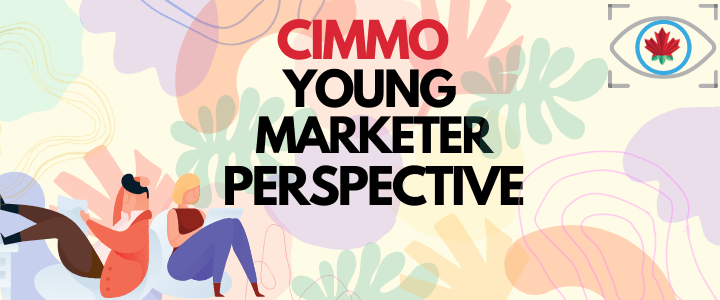Welcome to the CIMMO Young Marketer Perspective where young professionals are providing us their take on important topics in marketing. Our goal is to provide these marketers with a platform to share their learnings and experiences. Here Aaron Moraes provides marketers with tips to keep grab and maintain consumer attention while advertising through YouTube.
With the rise in digital advertising, we see YouTube rise as the most popular video-sharing platform in the world. About 75% of Canadian internet users watch YouTube videos several times a day (Think With Google, 2016), and, as such, brands’ have made it their first choice to promote their products and services. These statistics indicate YouTube is a powerful marketing tool in a marketer’s arsenal. However, there is a key issue faced by marketers on YouTube: the adverse affect on attention spans, which makes it difficult to attract—and therefore, retain—the audience’s attention.
Our ability to pay attention to things for a long duration is shrinking. When we watch a YouTube video, we often get annoyed at the instrusive ads; something we cannot skip. Oftentimes, when it is a non-skippable ad, we quickly tend to lose focus, which makes it difficult for an advertiser to effectively get their message across. Is it a wise idea to communicate the benefits of your product or service on your YouTube video? The answer depends on how well you can effectively and creatively condense it into 5-8 seconds. According to a study conducted by Microsoft, the attention span of an adult is only eight seconds compared to the 12 seconds in the year 2000 (Cision, 2018). This means you have maximum eight seconds to get your message across. What’s worse, you have merely 5 seconds to grab the attention of the viewer if it is a skippable ad.
YouTube has various types of ads. Below, I will explain in greater detail, skippable and non-skippable ad formats, and highlight key tactics to make sure they are effective for your brand:
- Skippable: These ads are between 12 seconds to under three minutes long, and can be skipped by the viewer after five seconds.
- Non-Skippable: These ads cannot be skipped, and usually are about 15 seconds long.
Selecting one of the two is an important decision as both have different effects on people. The skippable versions are good for ads that can create a compelling story, and convey the important points in a five-second window, and continue to deliver information for its duration. Non-skippable ads are better for ads that need the extra time to deliver what’s necessary. You also need to keep in mind that they must dazzle their viewers for an extra 8-10 seconds.
This is a problem for anyone who wishes to create ads on YouTube. What can one do to combat this issue? Listed below are some of the key points that I think will help drive home the message while keeping viewers’ attention.
Straight-to-the-point: Do not beat around the bush whilst advertising on YouTube. Getting straight to the point will help the customer understand what you are offering instead of having to wait until the end of the video. A big mistake advertisers make is spending most of the 5-second window in setting up the advertisement, or only displaying their logo. It is important to make sure your ad is conveyed in those initial five seconds; you still need to get to the storyline right away, to ensure you effectively capture the viewer’s attention.
Relatable: One of the key methods to deliver an effective ad in a short duration, is to make it relatable to the audiences, as they will be reminded of the ad more often. Try to understand how the brand fits in with the audience’s preferences, its relevance, timing, etc. For example, Bai antioxidant drinks created an ad where they state, “You know what doesn’t make sense? Bai, it’s good for you but still somehow tastes amazing.” In this way, the ad challenges the norm that healthy drinks taste bad (Horn, 2016).
Know when to use a short-form video vs. a long-form: We have established it is harder to get people to invest their time in longer ads, even if they have a strong start. If you can’t keep the ad short and simple, make sure the long-form video is captivating—and relevant—from start to end. It makes sense that you would have shorter video ads to complement longer ones, this way as the ad is viewed, consumers will get both the concise, bite-sized version, and the longer, more detailed version.
Entertaining: Audiences generally tend to pay more attention to comedic videos than ones with a general theme. Physical comedy seems to work well, but never underestimate the power of punchlines. However, we must exercise caution where comedy or light-hearted approaches would not be effective, but rather inappropriate and potentially insulting, such as for medical, social awareness, religion, and culture situations.
A right combination of these points must be employed, after considering your target audience, and the point you are trying to make. Every ad should be tailored to the specific requirements of the audience. YOU HAVE JUST 8 SECONDS TO GET THE JOB DONE. Any more than that and the audience will be disengaged from the ad. It is important to have a vision, select the right length of ad, keep it straight to the point, relatable, and entertaining.
ABOUT THE AUTHOR
Aaron Moraes holds a Bachelor’s in Management Studies with a major in Marketing from Mumbai University, a certificate in Global Management from Conestoga College, and is pursuing a Graduate Certificate in Marketing Management from Seneca College. Aaron is a volunteer at a thrift store where he handles the operations and marketing efforts. Aaron is passionate about brand management, strategies, systems thinking—and Harry Potter.
REFERENCES
Cision. (2018, 01 22). Are Declining Attention Spans Killing Your Content Marketing Strategy?
Retrieved 07 27, 2020, from Cision: https://www.cision.com/us/2018/01/declining-attention-killing-content-marketing strategy/#:~:text=According%20to%20a%20study%20by,seconds%20in%20the%20year%202000.
Horn, P. (2016, 02 08). Horse Whisperer, Bai 2016 Super Bowl. Retrieved 09 23, 2020, from
YouTube: https://www.youtube.com/watch?v=hFdPlLAXSYY&ab_channel=PabloHorn
Think with Google. (2016, 09). YouTube Pulse: What Canadians Are Watching and How it Can
Impact Your Media Plan. Retrieved 09 23, 2020, from Think with Google: https://www.thinkwithgoogle.com/intl/en-ca/marketing-strategies/video/youtube-pulse-what-canadians-are-watching-and-how-it-can-impact-your-media-plan/








